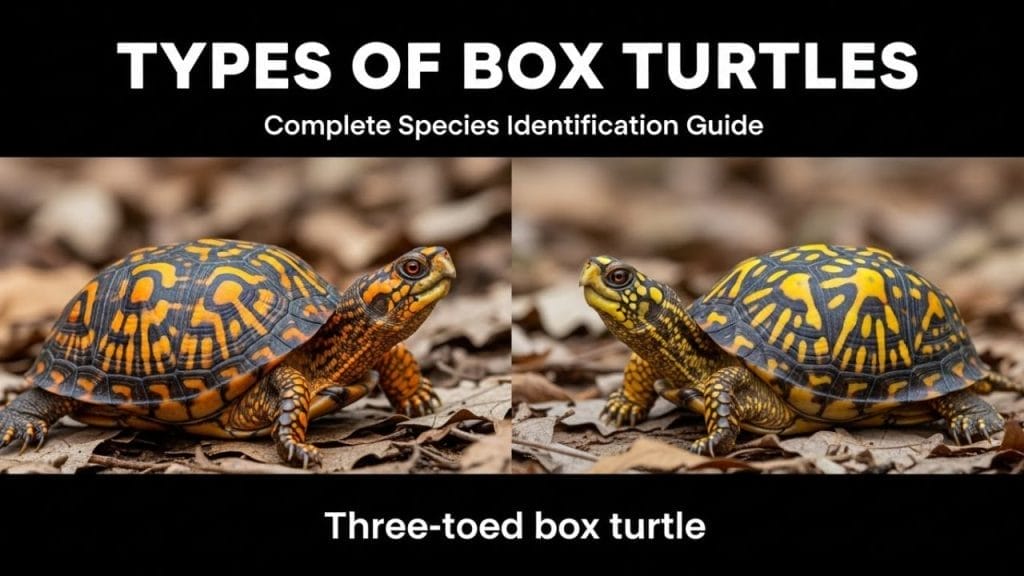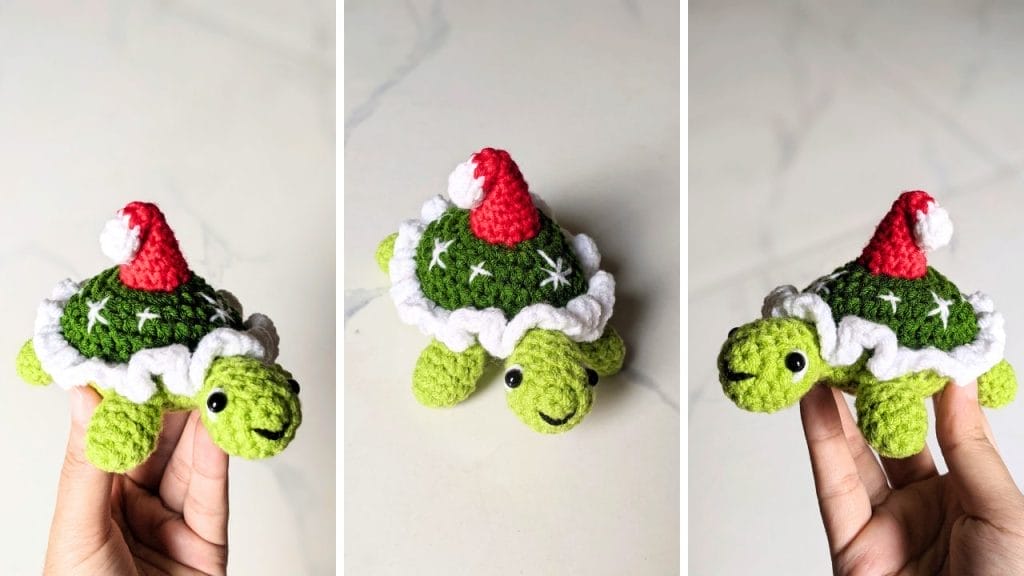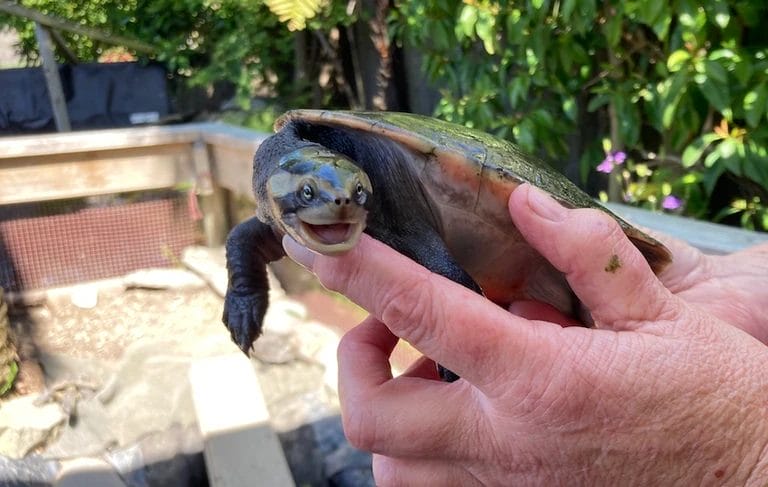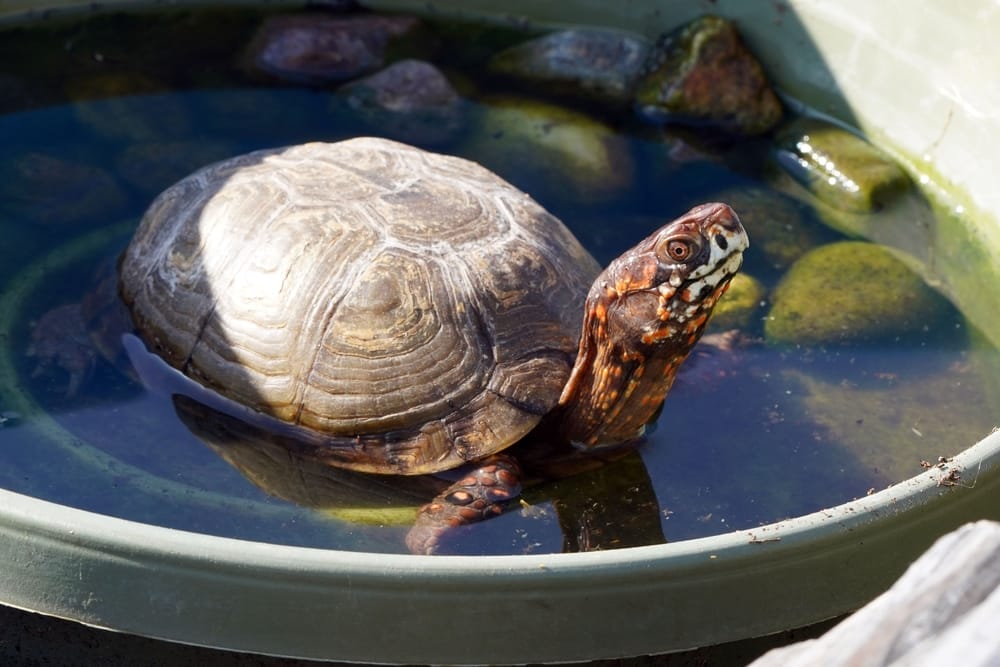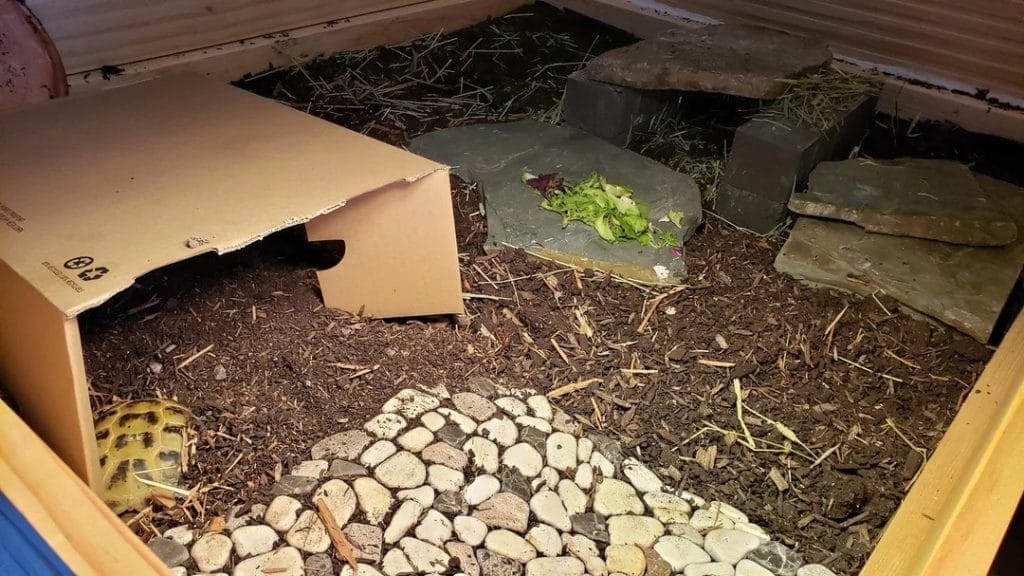Turtle Eye Diseases: Types, Symptoms, Prevention and Cure

This post was created with help from AI tools and carefully reviewed by a human (Muntaseer Rahman). For more on how we use AI on this site, check out our Editorial Policy.
You notice your turtle squinting, maybe rubbing its eyes against the tank. At first, it seems harmless—maybe just a little dirt.
But when the cloudiness doesn’t go away, panic sets in.
Sound familiar?
Eye diseases in turtles are more common than most people think—and they can escalate quickly without proper care.
Need To Talk With A Turtle Vet Right Now?
Common Eye Diseases in Turtles
1. Swollen Eyes
Swollen eyes are one of the first signs that something’s not right with your turtle. If your turtle’s eyes look puffy or stay shut all the time, it’s not just being lazy—it’s in trouble.
The swelling usually shows up in both eyes, though sometimes it starts in one. The eyelids can get so puffed up that the turtle can’t even open them. In some cases, you might also see a milky layer or a crust forming around the eyes.
One of the biggest reasons behind this is vitamin A deficiency. Turtles need vitamin A for healthy skin and eyes. If they’re not getting it from their food, their eyes swell up like balloons.
Dirty tank water and poor lighting also make it worse. Without UVB light, a turtle’s immune system takes a hit, and things start falling apart fast.
A turtle with swollen eyes usually stops eating. It can’t see well, feels weak, and just sits around looking miserable. Some even start bumping into tank walls or driftwood because their vision is gone.
You can help early on by doing a few things:
- Change the tank water and double-check the filter
- Offer foods rich in vitamin A, like squash, carrots, and leafy greens
- Make sure your UVB light is less than 6 months old and positioned correctly
For swollen eyes specifically, try these home remedies for turtle swollen eyes before seeking veterinary care.
But if the swelling doesn’t go down in 3–5 days, don’t wait. It’s vet time. Especially if the turtle’s eyes have yellow gunk coming out, or it hasn’t touched food for a few days.
Here’s what a vet might do:
| Treatment | What It Does |
|---|---|
| Vitamin A shots | Replenishes the missing vitamin |
| Antibiotic drops | Fights off eye infections |
| Eye flush | Clears out pus and debris |
Swollen eyes might seem like a small problem, but for turtles, it’s a big deal. Catch it early, and you save yourself a long (and expensive) road.
The most common symptom is turtle eyes that won’t open, which can result from multiple underlying conditions.
2. Conjunctivitis (Pink Eye)
Conjunctivitis in turtles is just like pink eye in humans—but smellier and a bit more serious. It makes their eyes red, swollen, and irritated, and usually comes with some sticky discharge.
This happens when the thin layer around the turtle’s eye—the conjunctiva—gets inflamed. You’ll often see the eyes look reddish or cloudy, and sometimes the inner eyelids swell up and stick together. The turtle might keep rubbing its face or blinking slowly like something’s bothering it.
The most common cause?
Dirty tank conditions. When the water is filled with bacteria, it’s just a matter of time. Poor basking conditions and low immunity also add fuel to the fire. Some turtles even get it after minor scratches or injuries near the eye.
Signs to look for:
- Redness or swelling around the eye edges
- Mucus-like discharge
- Turtle keeping one or both eyes closed often
It’s tempting to just wipe the gunk and move on, but that won’t solve it. Fixing water quality and making sure the turtle has proper lighting and warmth is key. A small drop in tank hygiene can quickly turn into an infection like this.
If it doesn’t clear up in a few days or gets worse, take your turtle to a reptile vet. They may prescribe antibiotic eye drops or ointment. Sometimes oral antibiotics are needed if the infection spreads deeper.
Turtles don’t cry—but if you see red eyes and goo, it’s their way of yelling, “Help me!” Don’t ignore it.
3. Eye Abscess
An eye abscess looks like a swollen lump or bump near your turtle’s eye, often under the eyelid. It’s not just puffiness—it’s a hard, pus-filled mass that makes the eye bulge out like there’s something stuck behind it.
This usually starts from a bacterial infection. But it doesn’t show up out of nowhere. Most of the time, it’s because of a long-term vitamin A deficiency, dirty tank water, or an untreated eye injury. Turtles with weak immune systems or poor diets are more likely to get it.
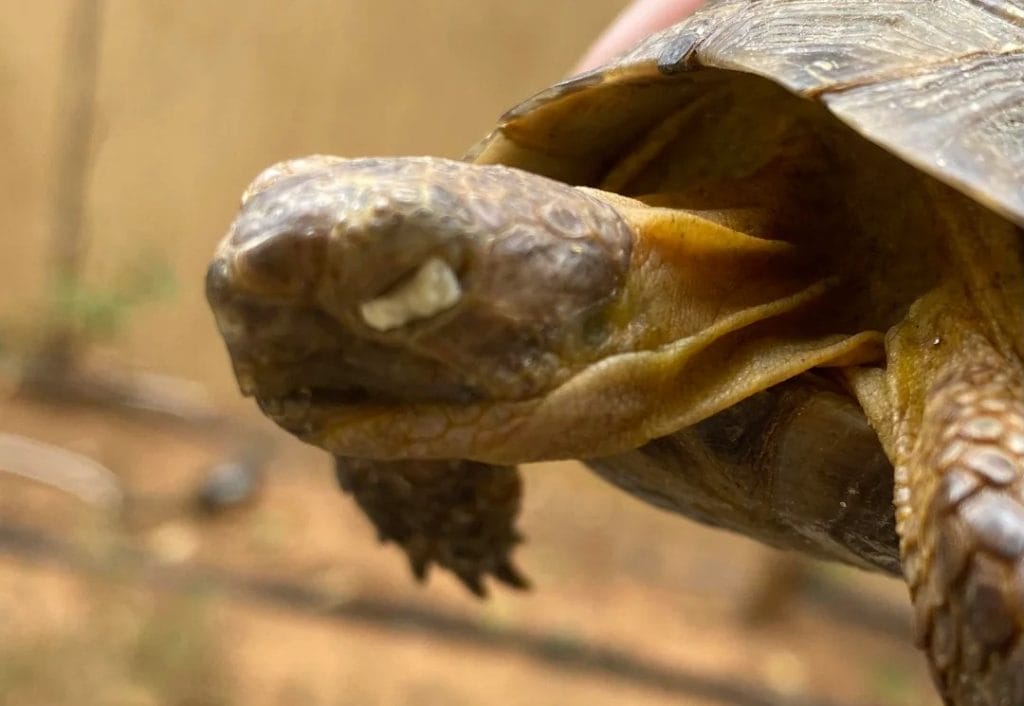
You might notice:
- A large, round bulge next to or under the eye
- The eye being pushed shut or fully closed
- Yellow-white pus if the abscess bursts or is opened
Unlike minor eye swelling, this won’t go away on its own. Home treatment won’t help either—not even warm water or over-the-counter drops. This is vet territory.
The vet will usually remove the abscess surgically and clean the area. Then, they’ll give antibiotics to make sure the infection doesn’t come back. If the turtle’s diet was the cause, you’ll also need to fix that or it’ll happen again.
It’s painful for the turtle and looks awful. The sooner you treat it, the faster your turtle can go back to seeing clearly—and living without a balloon under its eyelid.
4. Corneal Ulcers or Scratches
Corneal ulcers or scratches happen when the clear surface of a turtle’s eye—the cornea—gets damaged. This could be from bumping into rough tank decor, getting poked by a tankmate, or rubbing the eye too much.
At first, it may just look like a small cloudy spot on the eye. But if left untreated, it can get worse fast. The turtle may blink more, keep the eye closed, or rub its face on things to ease the pain.
Scratches turn into ulcers when bacteria enter the wound. That’s when it really starts to hurt. You might see:
- A white or gray patch on the eye
- Swelling or tearing
- Turtle acting jumpy or hiding more than usual
Clean water is critical here. Dirty tanks let bacteria in and slow down healing. If the scratch gets infected, you’ll need a vet to prescribe antibiotic eye drops. In serious cases, they might also use special eye ointments or pain relief meds.
Don’t try DIY solutions like salt water or human eye drops. Turtle eyes are sensitive and don’t handle random stuff well.
If your turtle’s eye goes from clear to cloudy overnight, don’t ignore it. It’s probably not just “a bad sleep.” It could be a scratch that needs real care.
5. Cataracts (Less Common)
Cataracts in turtles aren’t as common as other eye problems, but they do happen—mostly in older turtles. A cataract is when the lens inside the eye becomes cloudy, making it hard for the turtle to see clearly.
It doesn’t usually cause pain, but vision gets worse over time. You might notice your turtle missing food, bumping into things, or being less active. The eye might look gray or milky, like it’s fogged up from the inside.
Cataracts can form because of age, long-term vitamin deficiencies, genetics, or poor lighting conditions. UVB light helps turtles process nutrients and maintain eye health—so a bad bulb can be part of the problem.
There’s no home cure for cataracts. If vision loss is bad, some vets may consider surgery, but it’s rare and costly. Most turtles just adjust and get by with limited vision if everything else in their environment is safe and familiar.
If your turtle has cloudy eyes but no swelling or discharge, cataracts could be the reason. Not dangerous, but still something to watch.
A white film over turtle eyes indicates vitamin A deficiency or bacterial infection requiring specific treatment.
Symptoms to Watch Out For
Turtle eye problems usually don’t start with drama—they creep in slowly. But if you know what to look for, you can catch them before they get serious.
Here are the most common signs:
- Swollen or puffy eyelids: If your turtle’s eyes look like tiny balloons, something’s wrong—especially if both are affected.
- Eyes always closed: A healthy turtle opens its eyes often. If yours keeps them shut all the time, that’s a red flag.
- Cloudy or milky eyes: This can mean injury, infection, or cataracts. None of those should be ignored.
- Redness or discharge: Watery eyes, mucus, or yellow gunk usually means infection. It can start mild but get ugly fast.
- Frequent rubbing or scratching: If your turtle keeps wiping its face or scratching at its eyes, it’s likely uncomfortable or in pain.
- Loss of appetite: Turtles rely on their eyesight to hunt and eat. Eye problems often lead to skipping meals.
- Awkward swimming or bumping into things: Poor vision means your turtle can’t navigate its space properly. If it keeps hitting stuff, it’s not just clumsy—it might not be seeing well.
Keep an eye on your turtle’s eyes. They’ll usually tell you what the shell is going on.
This Hilarious Turtle Book Might Know Your Pet Better Than You Do
Let’s be real—most turtle care guides feel like reading a textbook written by a sleep-deprived zookeeper.
This one’s not that.
Told from the snarky point of view of a grumpy, judgmental turtle, 21 Turtle Truths You’ll Never Read in a Care Guide is packed with sarcasm, sass, and surprisingly useful insights.
And hey—you don’t have to commit to the whole thing just yet.
Grab 2 free truths from the ebook and get a taste of what your turtle really thinks about your setup, your food choices, and that weird plastic palm tree.
It’s funny, it’s honest, and if you’ve ever owned a turtle who glares at you like you’re the problem—you’ll feel seen.
How to Prevent Turtle Eye Problems
Turtle eye issues are painful, stressful, and expensive to treat. The good news? Most of them are avoidable if you stay on top of a few key things.
Start with clean water. This is non-negotiable. Dirty water full of waste and bacteria is one of the top reasons turtles get swollen eyes or infections. Use a strong filter and do regular water changes—don’t just top it off and hope for the best.
A proper diet is just as important. Turtles need vitamin A for healthy eyes. Without it, they end up with swollen lids and other problems. Offer foods like:
- Dandelion greens
- Carrots
- Butternut squash
- Leafy greens like collards or mustard greens
Next, don’t skimp on lighting. A UVB bulb is not optional—it’s a must. Replace it every 6 months, even if it still lights up. Without UVB, turtles can’t absorb nutrients properly, which messes with everything, including eye health.
Also, look around the tank. Sharp rocks, rough decorations, or aggressive tankmates can lead to scratches and injuries. Make sure the space is safe and calm.
To recap:
- Keep the water clean
- Feed vitamin A-rich foods
- Provide strong UVB lighting
- Avoid sharp or risky tank setups
- Watch your turtle’s behavior regularly
Prevention sounds boring, but it saves you money, stress, and one very grumpy turtle.
Home Remedies (When the Case Is Mild)
If your turtle’s eye problem is just starting and there’s no pus, blood, or deep swelling, you might be able to help at home. But don’t wait too long—mild can turn serious real quick.
Start by cleaning up the water. Do a big water change and check your filter. Bad water makes everything worse. A clean tank gives your turtle a fighting chance.
Next, upgrade the diet. Add vitamin A-rich foods like:
- Shredded carrots
- Dandelion greens
- Squash or pumpkin (no sugar, just plain)
You can also use turtle-safe eye drops or plain saline solution—but only if the eyes aren’t leaking or infected. A couple of drops once or twice a day can help wash out dust or mild irritation.
Make sure the basking area is warm and the UVB light is working. Your turtle needs both to fight off illness.
If your turtle’s still not eating or the swelling gets worse in a few days—stop guessing. It’s time for a vet. Don’t let a small issue turn into something nasty.
When to See a Vet
Not every eye problem can be fixed at home. Some need real medical help—and fast. Waiting too long can lead to permanent damage or even blindness.
Here’s when you should stop the home remedies and call a reptile vet:
- The eye stays swollen for more than 3–5 days
- There’s yellow, white, or bloody discharge
- Your turtle hasn’t eaten in days
- The eye looks foggy, crusted shut, or badly injured
- There’s a hard lump or abscess near the eye
- Both eyes are shut and your turtle can’t see anything
Also, if you’re not sure what you’re dealing with—it’s better to ask a vet than to guess.
Turtle eye infections move fast. One day it’s puffy, the next it’s oozing. A quick vet visit can save your turtle from a long, painful recovery (and save you from a costly mess later).
Treatment Options
Once a vet gets involved, the treatment depends on what’s actually going on. But in general, here’s what they might do:
1. Antibiotic Eye Drops or Ointment
Used for infections like conjunctivitis or mild ulcers. These help kill bacteria and reduce swelling. You’ll need to apply them daily for a week or more.
2. Vitamin A Injections
If the turtle has a serious deficiency, the vet might give a shot. This works faster than just changing the diet.
3. Surgical Drainage (for Abscesses)
If there’s a lump or pus pocket, the vet may need to cut it open and clean it out. It sounds scary, but it’s quick and helps a lot.
4. Pain Relief or Anti-Inflammatory Meds
Sometimes the vet will give these if your turtle is clearly in pain or the swelling is intense.
5. Supportive Care
If the turtle isn’t eating, they might use a feeding tube or fluids to keep it going while the eye heals.
These treatments aren’t for guessing games. Always follow the vet’s instructions closely. Turtle eyes are delicate—you don’t want to make things worse by winging it.

About Author
Muntaseer Rahman started keeping pet turtles back in 2013. He also owns the largest Turtle & Tortoise Facebook community in Bangladesh. These days he is mostly active on Facebook.





